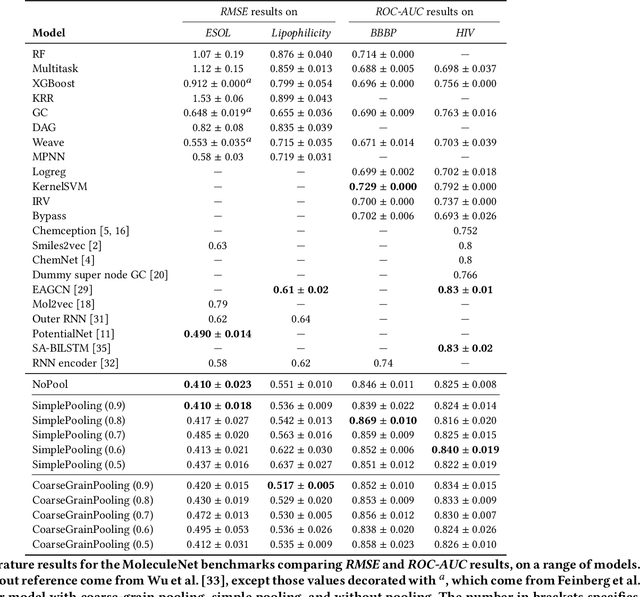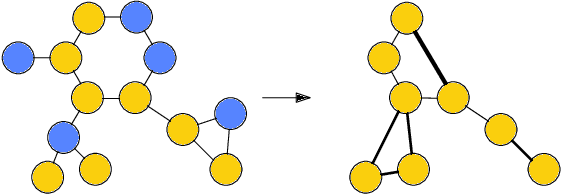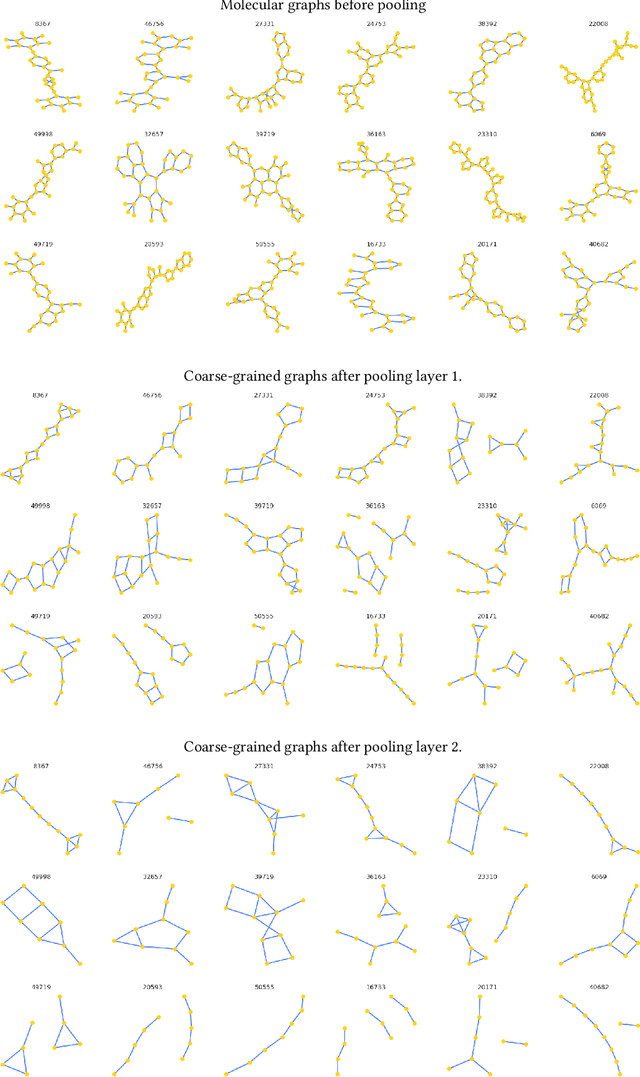Noor Shaker
Sparse hierarchical representation learning on molecular graphs
Aug 06, 2019



Abstract:Architectures for sparse hierarchical representation learning have recently been proposed for graph-structured data, but so far assume the absence of edge features in the graph. We close this gap and propose a method to pool graphs with edge features, inspired by the hierarchical nature of chemistry. In particular, we introduce two types of pooling layers compatible with an edge-feature graph-convolutional architecture and investigate their performance for molecules relevant to drug discovery on a set of two classification and two regression benchmark datasets of MoleculeNet. We find that our models significantly outperform previous benchmarks on three of the datasets and reach state-of-the-art results on the fourth benchmark, with pooling improving performance for three out of four tasks, keeping performance stable on the fourth task, and generally speeding up the training process.
Active Player Modelling
Dec 10, 2013Abstract:We argue for the use of active learning methods for player modelling. In active learning, the learning algorithm chooses where to sample the search space so as to optimise learning progress. We hypothesise that player modelling based on active learning could result in vastly more efficient learning, but will require big changes in how data is collected. Some example active player modelling scenarios are described. A particular form of active learning is also equivalent to an influential formalisation of (human and machine) curiosity, and games with active learning could therefore be seen as being curious about the player. We further hypothesise that this form of curiosity is symmetric, and therefore that games that explore their players based on the principles of active learning will turn out to select game configurations that are interesting to the player that is being explored.
 Add to Chrome
Add to Chrome Add to Firefox
Add to Firefox Add to Edge
Add to Edge